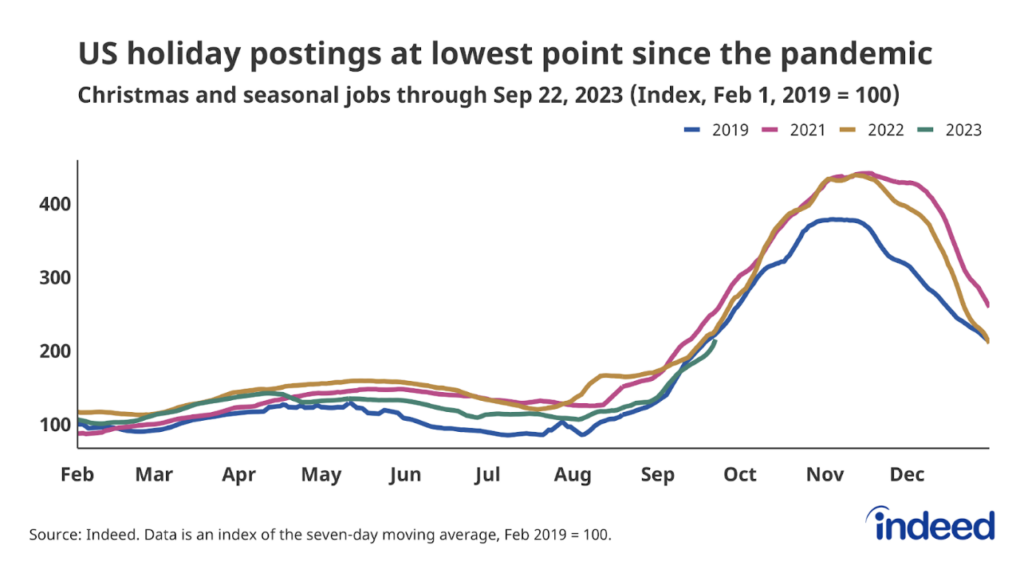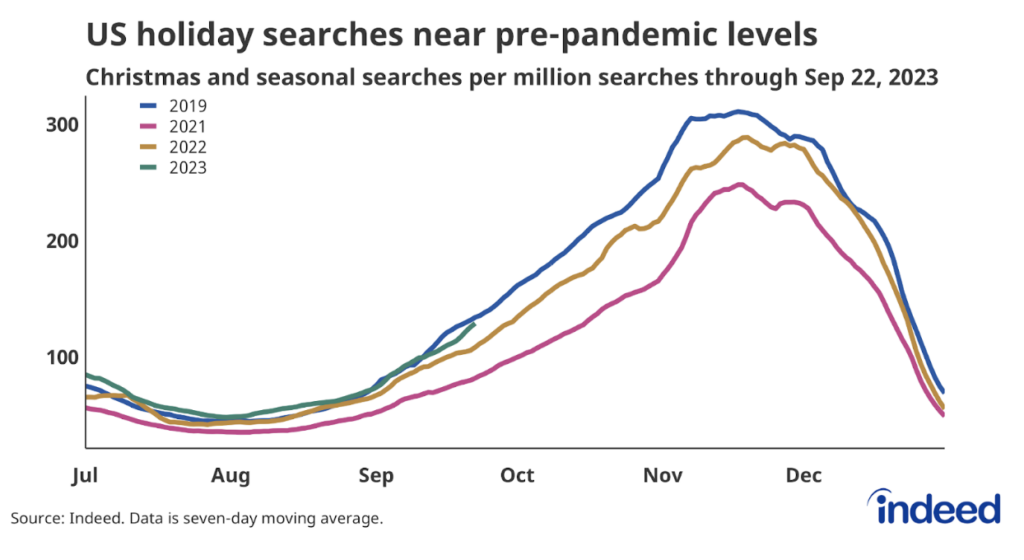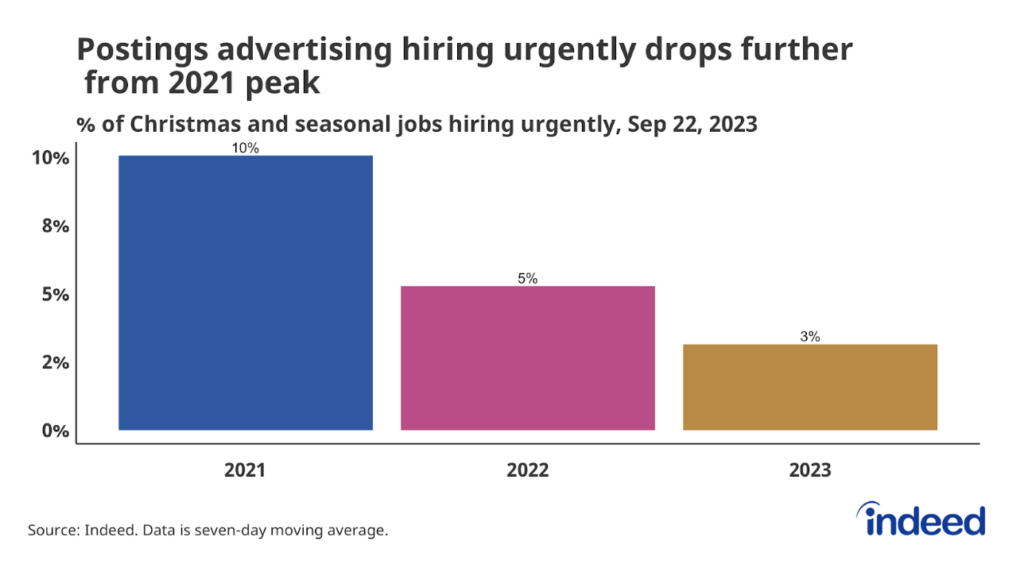Key Points:
- Searches for seasonal jobs are up 19% from 2022 to their highest level in several years, and just 4% below their pre-pandemic, 2019 baseline.
- Seasonal job postings are currently down 6% compared to the same time last year, continuing a downward trend in demand for seasonal workers.
- Just 3% of job postings note an urgent need to be filled this year, down from a peak of 10% in 2021.
After a couple of years of diminished interest following the onset of the pandemic, workers are again seeking seasonal, holiday work at levels approaching pre-pandemic norms. But there are fewer of those jobs available this year than in years past, and less urgency to fill those that are available, as employers increasingly seem content to ride out the upcoming holiday shopping surge at current staffing levels.
Seasonal postings fall below pre-pandemic trends
For the first time in the post-pandemic era, the number of seasonal/holiday job postings on Indeed has fallen below pre-pandemic levels. As of late September, seasonal job postings were down 3% from the same time in 2019, and 6% below levels from the same period a year ago. The decline in postings so far this year is a sign that employers in industries that typically hire large numbers of seasonal workers—including retail and sales—are feeling confident that their current workforce will be sufficient to weather the season.

Job seeker interest in seasonal positions continues to climb
But as COVID hospitalizations continue to trend downward, job seekers are showing signs they may be more comfortable with the idea of in-person, seasonal work this year compared to the past few years. As of late September, job seeker searches for holiday/seasonal jobs were at a three-year high, up 19% from the same time in 2022, and less than 4% below 2019 levels.

Hiring urgency for seasonal positions at a two-year low
Even so, despite increasing worker demand for these roles, employers are showing diminished urgency in filling them—further evidence of a job market that remains strong relative to historic norms, but is cooling from the past couple of years. As of late September, just 3% of seasonal job posts noted some kind of urgent need, roughly a third of the level from 2021 (10%), but still up from virtually zero in 2019. As of late September, less than 1% of seasonal postings mentioned a signing bonus or other incentive to would-be applicants, similar to a year ago and down from a recent peak of 4% in 2021.

Conclusion
The months to come will determine the final verdict on the 2023 holiday hiring season, but for now, things look muddy and a bit off from pre-pandemic norms. Job seeker interest in seasonal work is higher than a year ago, as in-person work becomes less daunting. But employer demand is at its lowest level in years, and the urgency to hire is fading. Early indications point to a cautious start to seasonal hiring as we inch closer to the beginning of the holidays, with more job seekers competing for fewer openings.
Methodology
We define seasonal job postings as those with one or more holiday-related terms in the job title, including, but not limited to, “holiday,” “seasonal,” and “Christmas.” Definitions change slightly from year to year, so previous holiday hiring analyses are not directly comparable. Seasonal job searches are defined as those containing one or more of the same list of holiday-related terms.
We define urgent hiring job postings as those in which words like “hiring urgently,” “urgent hire,” “immediate start,” “urgent vacancy,” or “start today” appear in the job description. These postings do not refer to the “hiring urgently” tag visible to job seekers on Indeed.
We define hiring incentive job postings as those that have terms related to signing bonuses or retention bonuses, or contain “bonus,” “bonuses,” or “incentive” in the title of the job posting. Signing bonus job postings are defined as those that include terms like “signing bonus,” “sign on bonus,” “signing incentive,” or “bonus for signing on” in the job description. Retention bonus jobs are defined as postings that include terms like “retention bonus” or “longevity bonus” in the job description.



